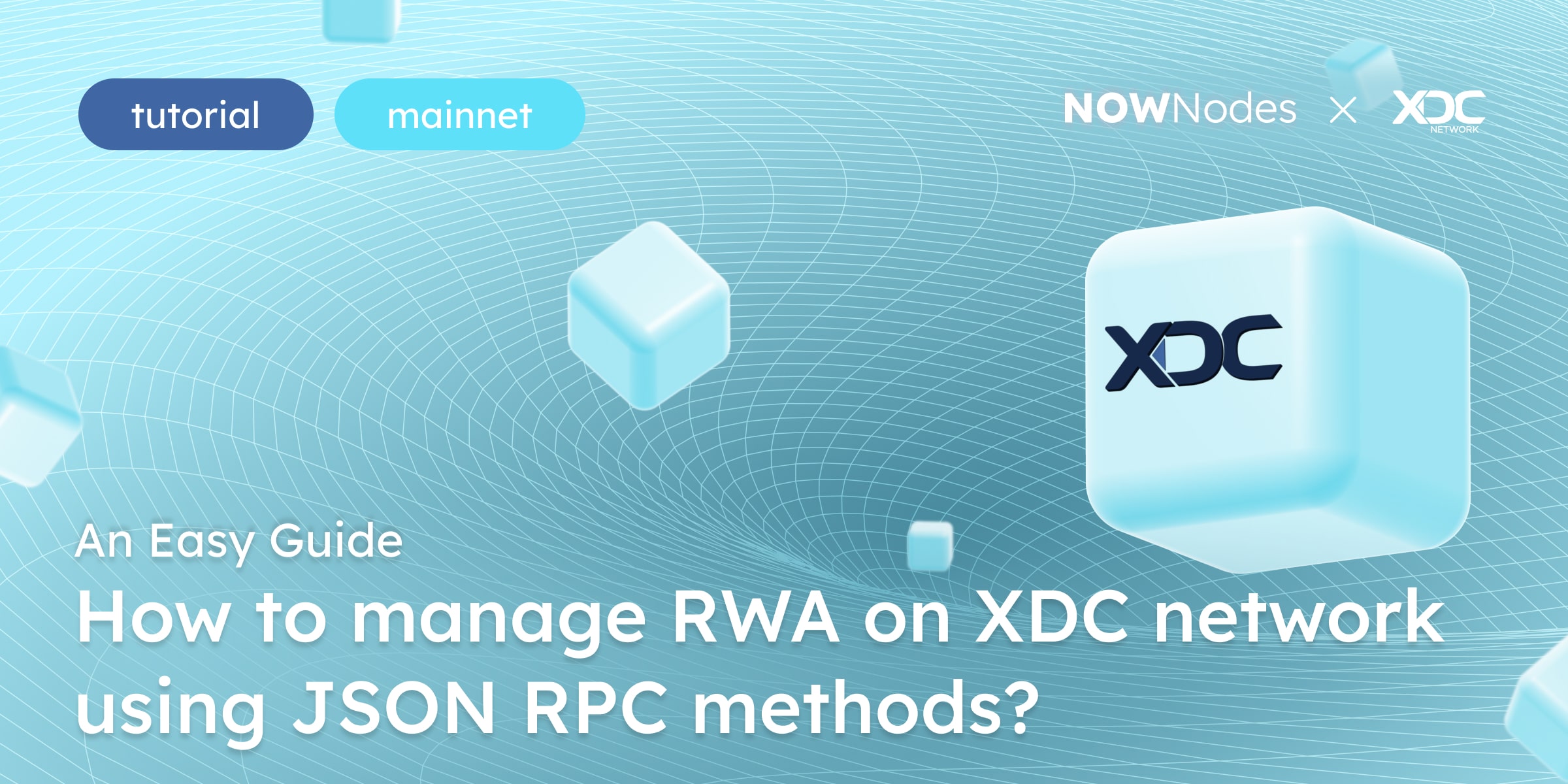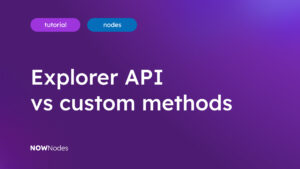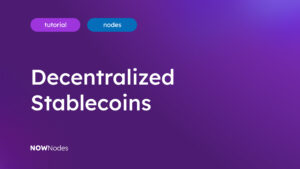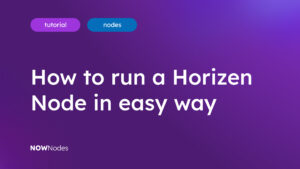In the rapidly evolving world of blockchain, lots of people are interested in when it will be possible to convert things from the real world into crypto tokens. Well, blockchains like the XDC made it possible and easy. Nowadays, managing Real World Assets (RWA) through digital platforms has become a frontier of innovation. The XDC Network, with its enterprise-grade blockchain capabilities, offers a robust environment for tokenizing and managing RWAs efficiently.
In this guide we are going to break down the process of managing RWAs on the XDC Network using JSON RPC methods, providing a comprehensive yet straightforward approach for developers and asset managers alike. Moreover, we’ll outline the advantages of the XDC network in RWA management and other Web3 enterprises’ needs.
What is the XDC Network?
The XDC is an open-source enterprise-grade blockchain network, designed by decentralized smart contracts platform XinFin. The XDC Network is an EVM-compatible Layer 1 blockchain, that offers a solid foundation on which any project can build. Anything that can be built on Ethereum or other EVM Layer 1s can also be built on XDC with ease, super-sonic speed, and negligible gas fees.
XDC Network uses the Delegated Proof-of-Stake consensus mechanism. It is known as XDPoS. It enables leveraging the power of stakeholders to resolve consensus issues fairly and democratically. Due to its unique features, XDPoS is more enterprise-ready and regulatory-compliant than other blockchains.
XDC Network serves as the backbone for many unique enterprise applications such as ISO 20022 messaging and those designed to support global trade. Its compatibility with ISO 20022 messaging and legacy systems like SWIFT and ERP makes XDC a unique and outstanding blockchain. As such financial messaging protocols are similar to what we use in our daily lives while making cashless payments or sending online transactions. That is the reason why the XDC network has advantages and a great chance among other blockchains to be integrated into our daily lives, allowing users and enterprises to make the process of Real-World Asset tokenization as easy as possible.
What is RWA in the Context of Blockchain?
In the blockchain realm, Real World Assets (RWA) refers to tangible or intangible assets from the real world, such as real estate, commodities, or intellectual property, that are tokenized and managed on a blockchain. In simple words, any goods and things that you use in your daily life could be counted as RWA and be digitized with the help of XDC network capabilities.
The Role of Smart Contracts in RWA Tokenization
Smart contracts play a pivotal role in this process, serving as self-executing contracts with the terms of the agreement directly written into code. These contracts automate the execution of transactions and agreements, providing a secure and efficient way to manage RWAs on the blockchain.
The principles of smart contracts utilization could be translated on such an easy example: if you’re making a bet with your friend for $100 that the LA Lakers will win the next NBA tournament, you could certify this bet with a smart contract. That way, when the conditions are satisfied and the Lakers are the winners, your friend’s hundred bucks will be automatically sent to your bank account.
That was just one of hundreds of billions of examples of utilizing smart contracts. The point is that any real-world asset could be tokenized and recorded on the blockchain. With the tokenized Real World Assets recorded on the blockchain via smart contracts, you could also sell your car, a rare Pokemon card, or even intellectual property for the song that you’ve just written and much much more. Be sure that the XDC network is a perfect tool for you in these cases!
Why is XDC Network a Great Place to Work with RWA
The XDC Network provides a robust, efficient, and scalable platform for managing RWAs, with the added benefits of interoperability, low costs, and sustainability. These features make it an attractive option for businesses and governments looking to leverage blockchain technology for asset management and other applications.
By using the XDC network in your Web3 development and business needs you can unlock possibilities of Asset Tokenization where real-world assets are transformed into digital assets via smart contracts for the benefit of the following:
- Access to existing and untapped capital markets
- The XDC Network facilitates the tokenization of assets, making it easier for them to be listed on digital marketplaces. This opens up assets to a broader range of investors, including those in traditional capital markets and newer, untapped markets that are looking for digital investment opportunities.
- An eternal digital footprint for the asset
- Tokenization on the XDC Network ensures that every asset has a digital footprint on the blockchain, which is unchangeable and transparent. This digital record includes the asset’s history, ownership, and transactions.
- A borderless and barrier-free exchange
- The XDC Network operates globally, transcending geographical boundaries and eliminating many of the traditional barriers to asset exchange. XDC Network also provides great Cross-chain bridge capabilities. XDC Network is host to multiple bridges that encourage multi-chain interoperability, a philosophy held by XinFin since day one.
- Regulatory supported tokenization
- The XDC Network is designed with a focus on regulatory compliance, making it a suitable platform for tokenizing assets in a manner that aligns with existing legal and financial frameworks. The network’s dedication to standards like ISO20022 ensures that tokenized assets can integrate seamlessly with traditional financial systems.
The XDC Network’s unique combination of accessibility, security, interoperability, and regulatory alignment makes it an ideal platform for tokenizing and managing RWAs, promising to revolutionize various sectors by enhancing liquidity, transparency, and global accessibility of assets.
For even more in-depth information, you might consider exploring resources directly from XDC Network’s official documentation.
RPC Methods for Interacting with RWA Smart Contracts on XDC Network
To interact with smart contracts that you’ve created or with pre-build ones that you’re willing to use, you need to utilize some JSON RPC methods. Keeping in mind that XDC is EVM compatible Layer 1 network, all the RPC methods available on Ethereum can be used on the XDC network too.
So, once your contract is deployed, you’ll interact with it using its functions to manage the RWAs. Interacting with RWA smart contracts on the XDC Network involves two primary JSON RPC methods:
eth_sendRawTransaction- for executing transactions that alter the blockchain state
eth_call- for reading data from the blockchain without making any changes.
These methods facilitate various operations such as transferring asset ownership, updating asset information, and querying asset details.
Before we delve into these methods in detail and show you some sample requests, there is one crucial requirement that allows you to interact with the XDC network – accessing XDC RPC Full Nodes! There are a few ways to do this:
- By running your own XDC full nodes
- By using third-party node providers like NOWNodes
As running your own XDC full node involves tons of financial, resource, and time investments, the NOWNodes API service could become your life-saver in the process of connecting to the XDC network. Our Blockchain-as-a-Service solution that provides access to Full Nodes is considerably cheaper than running your own node. Further, we’ll show how you could connect to the XDC with ease using NOWNodes and outline some of our advantages.

How to Access XDC Network With NOWNodes RPC Full Nodes
NOWNodes provides an accessible gateway to the XDC Network through its RPC full nodes. By leveraging NOWNodes, developers can easily connect their applications to the XDC Network, enabling seamless interaction with RWA smart contracts. This service simplifies the process of sending and receiving transactions, querying contract data, and more, all without the need to set up and maintain a full node.
By choosing NOWNodes for your XDC Full Node needs, you will receive unparalleled reliability, guaranteed uptime, and 24/7 professional support, allowing you to focus on what matters most: building innovative blockchain solutions and converting RWAs to a digital format.
Connection to XDC RPC full nodes involves a few simple steps. All you need to do is:
- Visit the NOWNodes website (https://nownodes.io/) and create an account.
- Verify your account by email.
- Choose a tariff plan. There are a variety of plans that fit any development needs (including a START FREE plan!)
- The next step is to choose the desired blockchains to access. By utilizing a free plan you will be provided with the option to choose 5 blockchain networks. If you are looking for the XDC mainnet, just navigate downwards and click on the button located in front of the section labeled “XDC” on the page.
- On the “DASHBOARD” page find the “ADD API KEY” button. Here, you can generate an XDC API key.
- Explore the methods from the “DOCS” page to connect to the XDC full node and interact with the XDC mainnet network.
- Finally, when the registration process is complete it’s time to make some requests!
- Use the provided XDC Endpoint xdc.nownodes.io and your API key to make it happen.
XDC eth_sendRawTransaction JSON RPC Method
The eth_sendRawTransaction method is crucial for submitting transactions that modify the state of the blockchain. This includes operations like transferring RWA ownership or executing specific functions within a smart contract. The method requires a signed transaction as input, ensuring secure authorization of the operation.
Here’s the sample request for the eth_sendRawTransaction RPC method:
curl --location 'https://xdc.nownodes.io/<your-api-key>' \
--header 'Content-Type: application/json' \
--data '{
"jsonrpc": "2.0",
"method": "eth_sendRawTransaction",
"params": [
"<Signed_transaction>"
],
"id": 1
}'The response for this method is the transaction hash, or the zero hash if the transaction is not yet available. Don’t forget to add your API key and replace <Signed_transaction> with the actual hash of your signed transaction. Everything has to be formatted correctly in order for things to work. So, make sure your nonce contains the 0x prefix. <Signed_transaction> should include a call to your contract’s function to be able to communicate with the RWA smart contract.
XDC eth_call JSON RPC Method
For operations that require reading data from the blockchain without making any state changes, the eth_call method is used. This method is instrumental in querying smart contract functions to retrieve information about RWAs, such as current ownership, asset status, and other relevant details. It’s a powerful tool for applications that need to display real-time asset information without executing transactions.
Here’s a sample request:
curl --location 'https://xdc.nownodes.io/<your api-key>' \
--header 'Content-Type: application/json' \
--data '{
"jsonrpc": "2.0",
"method": "eth_call",
"params": [
{
"from":"<The address the transaction is sent from (string)>",
"to":"<The address to which the transaction is addressed (string)>",
"gas":"<gas provided for the transaction execution (integer)>",
"gasPrice":"<each paid gas encoded as hexadecimal (integer) >",
"value":"<value of transaction encoded as hexadecimal (integer)>",
"data":"<The hash of the method signature and encoded parameters (string)>"
},
"latest"
],
"id": 1
}'eth_call RPC method returns the data value of the executed contract function. There are lots of parameters for this method. Some of them are optional and some of them are required (such as “to” and “data”). In the case of managing RWA data, the parameter “to” is your RWA’s smart contract address.
Conclusion
Interacting with XDC Network using JSON RPC in terms of Real World Assets management provides a blend of security, efficiency, and scalability. This guide has outlined the essential steps and methods for interacting with RWA smart contracts, providing a clear path for Web3 developers and enterprises to leverage the power of blockchain for real-world asset management. With the continued growth of blockchain technology, the tokenization and management of RWAs on platforms like the XDC Network represent a significant step forward in bridging the gap between traditional assets and the digital economy.
We hope that this guide was helpful. Please let us know by leaving your feedback in the comments in our Telegram Builders Community or just by hitting our DMs at X/Twitter.
Get started with our XDC Full Node and experience the full power of the ecosystem #NOW



